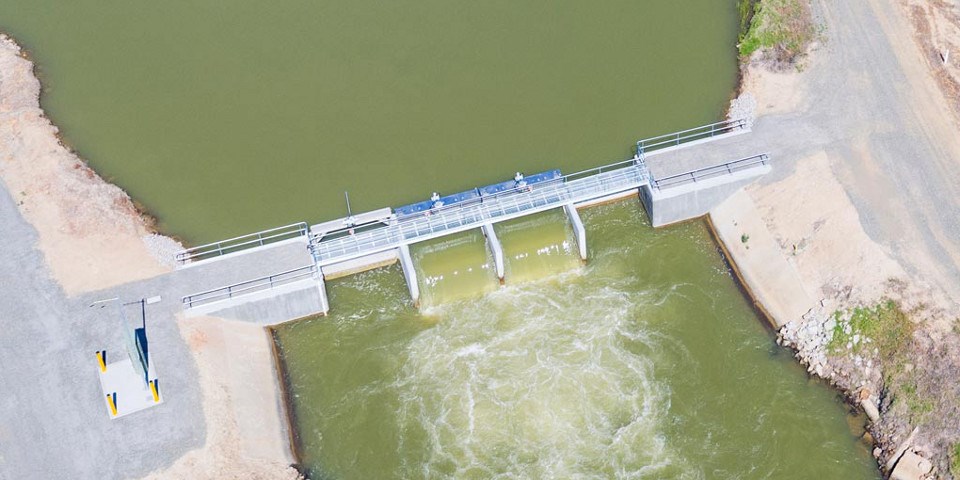Text & images by the Australian Stainless Steel Development Association (ASSDA)
___
Mulwala Canal is Australia’s largest irrigation canal, and together with Wakool Canal runs 157km long. It has the capacity to deliver more than 1,500,000ML of water per year to irrigators in the Southern Riverina, helping to generate more than AUD 500 million of gross agriculture revenue per year for the region.
Stainless control gates
AWMA Water Control Solutions successfully delivered 91 stainless steel water control gates across the project’s irrigation system assets. This modernisation program has substantially increased water efficiencies, improved water flow, enabled ordering flexibility and significantly reduced water leakage through infrastructure upgrades.
The works included 21 Mulwala Canal Sites (65 LayFlat gates and 26 Undershot gates), Lawson Syphons (two Undershot gates), the Edward River Escape (two Bulkhead gates) and the Wakool Canal Offtake (three Undershot gates).
All gates were purpose-engineered, designed and manufactured by AWMA to meet exact site and operational requirements. The water control gates measure up to 5.5m wide and 3m high in size, and are fabricated from 230 tonnes of stainless steel. The stainless steel water control gates required 7.5km of weld, and were then pickled to improve corrosion resistance and tested in-house to international ISO 9001 quality standards. Dedicated tooling and handling equipment were also paramount in ensuring no cross-contamination during all processes undertaken.
Vulcan Stainless supplied grade 304 stainless steel plate material, whilst Valbruna Australia supplied grade 431 stainless steel shafts.
Akras Industries were also engaged in a semi-automated welding process in order to join the oversize gates back together post-laser cutting and pre-pressing. Welding was carried out in line with AS1554.6 / ASME 9 / AS1210 – Class 1 classifications to ensure the highest weld integrity and compliance to quite rigid specifications as set out within the scope.
Arcus Wire Group were engaged by AWMA to assist in the design and supply of 20mm, 7×19, grade 304 stainless steel wire rope cables for the purposes of raising and lowering the water control gates. 130 cables were supplied (two cables installed per LayFlat gate), with an individual Minimum Breaking Strength (MBS) of over 27,000 kgf.
Arcus Wire Group and AWMA collaboratively designed the bespoke cable end terminations to suit the specified MBS, and the manufacture of these products was completed in-house by Arcus Wire Group.
Material specification
Stainless steel was specified for its longevity and durability, particularly with the water control gates being submerged in irrigation water. In addition, stainless steel was chosen over aluminium in the materials specification to extend the nominated asset life from 25 years to 50 plus years. The gates have been integral to improving the efficiency and productivity of water delivery, and the use of stainless steel offers an economically maintainable and longer-lasting infrastructure solution.
All new gates installed are stainless steel and telemetry-enabled for remote control, a capability that has radically changed the way Murray Irrigation manages water delivery to its customers.


